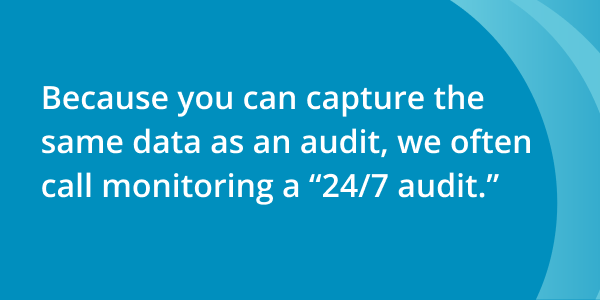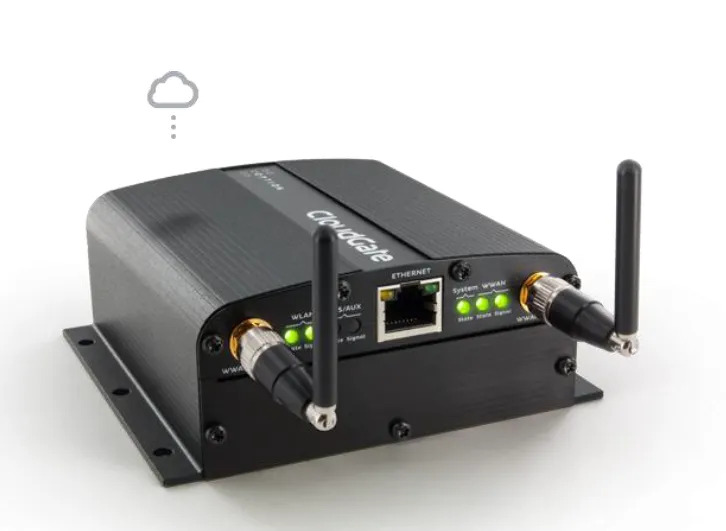
Why and How Winemakers Are Using Industrial Air Compressors
June 12, 2024
Single Stage vs 2 Stage Air Compressor: Five Critical Differences
June 26, 2024WAYS TO MEASURE AIR COMPRESSOR PERFORMANCE AND KNOW IF YOU NEED AN AUDIT
Kaishan USA | June 19, 2024 | Uncategorized

Making good use of your air compressor data can help you avoid downtime, improve reliability and improve the life of your equipment.
Like any other advanced machinery today, air compressors can provide a wealth of data. Using that data can make a big difference in the success of your compressed air system and your overall operation.
Why Measure Air Compressor Performance?
Making good use of the data now available from your air compressor can pay huge benefits, including the following:
-
- Enhance reliability. Improve operation of your air compressor and all the related equipment like filters, dryers and coolers.
- Prevent downtime. By maintaining your system to its highest level of performance, you’ll optimize operations and avoid costly breakdowns that damage equipment and shut down your plant.
- Lengthen equipment life. Identify equipment issues such as rapid cycling. Or receive an alert when oil changes and oil sampling are required, or your compressor is not operating within its design parameters.
- Enhance efficiency. Identify issues limiting system performance—your pressure band is set too high, or your system is rapid cycling, wasting energy and shortening equipment life.
- Optimize performance. Tweak system operation and get everything running according to design.
- Maintain air quality. Keep your compressed air output within design parameters for pressure, contaminants and moisture in the air.
- Apply good maintenance practices. Like the other equipment in your plant, your air compressor needs attention occasionally. Your data monitoring system will issue alerts and notifications when maintenance is required. Good maintenance, in turn, more than pays for itself in improved performance, greater reliability and reduced downtime. You can even schedule preventive maintenance before an issue becomes a problem.
- Comply with regulations. Many state and local regulators require periodic system checks such as tank inspections. And most manufacturers require regular maintenance procedures (e.g., oil sampling) to keep warranties in force. With good monitoring, you can identify equipment issues well before they reach the breaking point. And avoid accidents that result in damage, lost production and even injuries to your staff.
- Save money. Armed with good data, you can optimize your system, cut downtime, increase equipment life and create a safer environment for your team. All those things pay off financially.

By using air compressor data to keep your compressed air system functioning at its highest level of performance, you’ll optimize operations and avoid costly breakdowns that damage equipment and shut down your plant.
For more information on the benefits you can achieve by capturing and analyzing data, read our blog post, “Air Compressor Monitoring Tools for a Smart Factory.”
The key is to ensure you have the data you need to achieve your goals. Depending on your organization, that may mean either an audit or the use of ongoing monitoring.
Auditing vs. Monitoring Your Air Compressor Performance
Two common ways to gain a better understanding of the performance of your air compressor system are audits and monitoring. Each has its unique benefits and applications.
Audits, Defined
After an initial walk-through or assessment, an audit is often the substantial next step we recommend when we begin working with a company facing some compressed air challenges.
In an audit, your compressed air consultant will place data loggers at key points in your system, to measure key system parameters.
They will capture data for a week and then provide an analysis of your entire system.
The good news is that an audit is a great place to start, especially when no one’s sure what’s happening, and no monitoring is in place. For more information on the value of audits, see our blog post, “Five Ways an Air Compressor Audit Can Reduce Operating Costs.”
Audits have one fundamental limitation: they’re a snapshot. A detailed one, for sure. But we’re taking a week’s worth of data and extrapolating it across an entire year.

As a result, it may miss fluctuations in compressor use or output. For example, seasonal variations in ambient temperatures or even workload.
That’s why many companies turn to monitoring.

Using monitoring data, you can improve operation of your air compressor and related equipment such as filters, dryers and coolers.
Monitoring, Defined
In monitoring, your system is set up to capture real-time performance data from several unique vantage points throughout your system. Real time. 24/7/365.
The measurements can be reviewed at any time, even viewed remotely. You can give your consultant access to the data.
With monitoring, for instance, you may discover that even though you were shut down on Sunday, your compressor put out 100 CFM. So, something is amiss. And you might not uncover that with just routine observations.
It can also help you identify any abnormalities in your system and even help expedite troubleshooting.
Here’s an example. Suppose you are monitoring your system pressure at the compressor room and point of use, and your normal pressure drop is about 10 PSIG. But suddenly, it jumps to 15.
Having monitoring in place can tell you if the problem is at the beginning of the distribution system or the end.
In addition, monitoring can help you establish what is “normal” for your plant. One factory's "normal," after all, may not apply to other facilities. Or even locations within the same plant. As a result, monitoring can help you establish your baseline "normal." And quickly identify any changes that occur.
Because you can capture the same data as an audit, we often call monitoring a “24/7 audit.” Because all the information you capture is now available all the time.

What Air Compressor Data Should You Monitor to Measure Performance?
Your system can be set up to provide information on the following data points.
Pressure Levels
Pressure, of course, is one of the outcomes your air compressor system delivers. So, you’ll want to measure your compressor’s output and the pressure at the various end uses in your system.
An abnormal pressure drop may indicate that you have a leaking problem. The larger the gap, the more money you’re wasting.
We often recommend measuring pressure levels at several different points in your system. One right outside the compressor room, of course. But we’d also suggest collecting data at several key locations throughout the plant.
You might discover that one stretch of piping is not sized correctly. Perhaps the loop structure is not optimal. Or you may benefit from a receiver tank in another location.
Power Consumption
Your energy consumption readings can help you understand the supply side of your operation, telling you what your compressor is doing in various circumstances. You might see that you don’t have enough storage to account for a sudden increase in demand. And that, rather than one large-sized compressor, you can use a combination of backup and trim compressors to increase the performance and reliability of your system. Those are the kinds of issues you might uncover by watching power consumption.
Temperatures
Temperature readings can tell you whether your compressor is overworked. Or, conversely, whether it is underperforming.
Air that is too hot will damage end-use tools and equipment, degrading lubricants and seal materials. Some of your equipment could shut down if it gets too hot. Sudden spikes could point to problems with the cooling system or lubrication.
In addition, the water vapor in hot air will cause corrosion and scale buildup and may even result in freezing in colder climates. Not to mention the quality problems water vapor-laden compressed air would cause in applications like automotive, painting, semiconductor, healthcare and medical.
A recent article by the Compressed Air & Gas Institute (CAGI) spells out the hazards of moisture in compressed air—including rust, corrosion, freezing and increased wear in most applications. And problems with color, adherence and finish in painting applications.

Inadequate cooling would allow water vapor to remain in compressed air flow, compromising clean room conditions in a semiconductor facility.
It’s especially important to monitor temperatures in applications that need cool, dry air. If the temperature starts going the wrong way, you’ll want to address it quickly. Focusing on the dryers, for instance.
Other Key Monitoring Points
-
- Dew point. As with temperature, monitoring dew point is a great way to ensure your compressor and support equipment (including dryers and separators) isn’t sending moisture downstream into your larger compressed air system.
- Flow. You can calculate flow from the pressure, but you may want to measure flow if you have some concerns.
- Leaks. Monitoring is a big help in identifying leaks, a constant concern for compressed air users. Compressed air systems lose between 30% and 50% of their volume to air compressor leaks, with poorly maintained systems running as high as 80%. But remember, monitoring for sound leaks and other vibrations is only the start since 80% of leaks are inaudible. For those leaks, you’ll need leak detection equipment. For more information on the topic, visit our recent blog, “Air Compressor Leaking? How to Find and Stop Leaks.”
- Carbon emissions. Not so much an indicator of air compressor performance, carbon emissions are primarily a concern for corporations with ambitious sustainability programs.
For more information on the critical parameters you’ll want to monitor, read our blog post, “Twelve Reasons Why You Should Be Monitoring Air Compressor Data.”
With a clear idea of what to monitor, let’s review how we can capture and analyze your air compressor data.
How to Measure Your Air Compressor System
You can have 24/7 remote access to your air compressor data, tracking system performance and identifying readings that are out of spec.
Having that information allows you to fix problems before they start. Remote monitoring makes sense especially in far-flung systems like in a railyard or cement plant, where systems may be scattered over a large area.
There are three main ways to take advantage of the data your air compressor is generating. They include the following choices.
Simple Level
At the simplest level, you can pull alarms and warnings off your compressor controller or a pressure transducer for system pressure to monitor some basic parameters. The cost is small, and the demands on your IT department are minimal. Plus, in the event of a power failure, your measurements will come back online at the same time as your automation program.
Modbus Remote Monitoring and Controls
You can also connect the parts of your air compressor system, including compressors, dryers and other equipment, using a Modbus interface.

The AirWatch Wireless modem is an edge device that can be mounted remotely to make it easier to access its signal.
AirWatch
Our most advanced connection is through our AirWatch system, which uses a wireless-based cellular modem to allow real-time monitoring of your air compressor data through any connected device, from a desktop to a cell phone.
You can customize alerts about warnings and shutdowns. You can also format logging and trend analysis to your preferences. You can even give your local distributor or air compressor professional access to the system so that they can respond if you choose.

With our AirWatch system, you can even give a consultant access to your air compressor data.
You will have 24/7 access with 360° visibility into your air compressors status, allowing you to optimize its performance and efficiency. The AirWatch base unit is available on our KRSD, KRSL, KRSP, KRSP2 and KROF rotary screw air compressors and our KRSV rotary screw vacuum pump.
For more information on monitoring techniques, read our blog post, “Air Compressor Monitoring Tools for a Smart Factory.”
Local Help
Need help determining the best way to make use of your air compressor data? Kaishan USA can help. We work with a nationwide network of independent distributors, who can provide on-site help and consultation as needed. These factory-trained air compression experts can help you put all that data to good use.
Key Takeaways
-
- Armed with good data, you can optimize your system, cut downtime, increase equipment life and create a safer environment for your team.
- Auditing is often the first step we recommend, capturing critical system data for a week.
- We often call monitoring a 24/7 audit because you can capture the same data as an audit.
- Important data points include pressure levels, power use and temperature.
- Monitoring systems range from simple pressure transducers to Modbus controls and our advanced AirWatch system.
Let Us Help
You can use air compressor data to enhance performance. Achieve longevity. Lower costs. Improve reliability. And improve air quality. Why not start now?
If you need help figuring out what data to monitor and how to monitor it, get in touch with the experts at Kaishan. Contact us today.

